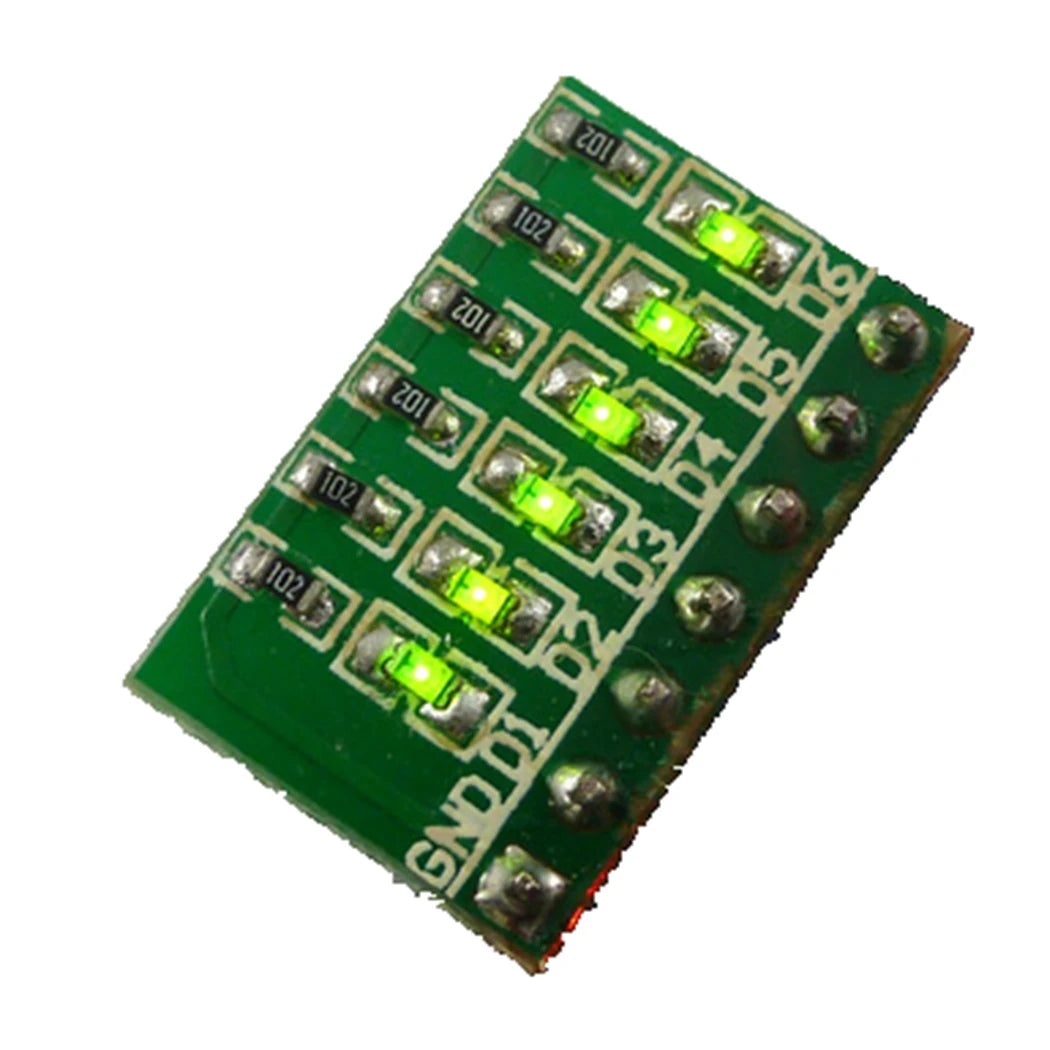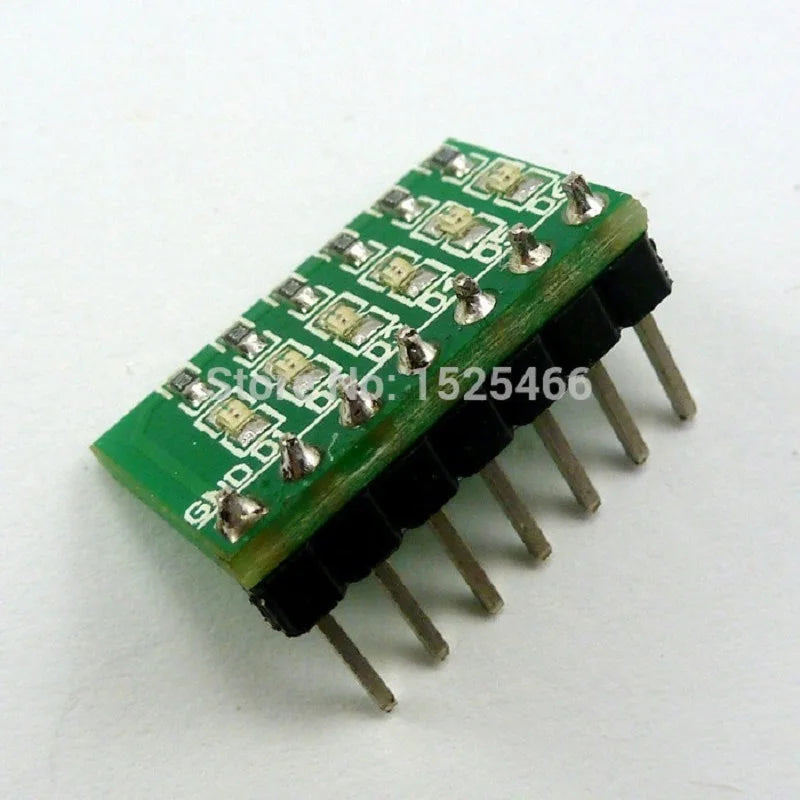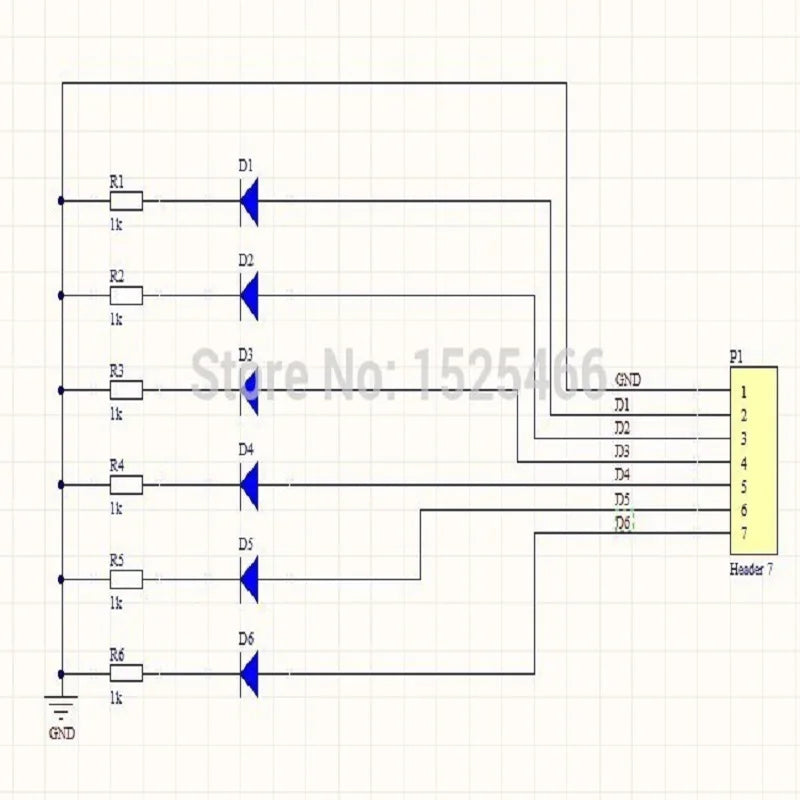1
/
of
5
Eletechsup Factory store
10pcs/lot DC 3.3V 5V 12V 6Bits Green LED Module Marquee Water Lamp Board for Breadboard DUE MEGA2560 STM32 ARM FPGA CPLD MCU
10pcs/lot DC 3.3V 5V 12V 6Bits Green LED Module Marquee Water Lamp Board for Breadboard DUE MEGA2560 STM32 ARM FPGA CPLD MCU
Regular price
$8.31 USD
Regular price
$8.31 USD
Sale price
$8.31 USD
Unit price
/
per
Couldn't load pickup availability
Product Name:10pcs/lot DC 3.3V 5V 12V 6Bits Green LED Module Marquee Water Lamp Board for Breadboard DUE UNO MEGA2560 STM32 ARM FPGA CPLD MCU
Packing list(Does not include UNO Board):
10 pcs 6 bit
Green
3V-12V Common Cathode LED's Board


Description:
2.54MM PIN 6 Digital LED Board ,Can be inserted directly into Arduiuo
UNO MEGA2560 DUE
Board (
Does not require any wiring
),Ideal for linking up to your Arduiuo UNO Pro Mini Nano Mega2560 DUE
Breadboard
etc,or others MCU (AVR STM32 ARM7 ARM9 ARM10 ARM11 PIC C8051 C51 STC MSP430 Xilinx Altera Lattice FPGA/CPLD etc.)
etc,or others MCU (AVR STM32 ARM7 ARM9 ARM10 ARM11 PIC C8051 C51 STC MSP430 Xilinx Altera Lattice FPGA/CPLD etc.)
1. 6 Digital Green Common Cathode LEDs( High level lighted ).
2. 7 PIN OUT 2.54mm
3. 1K ohm Limiting resistor
4 .Power Supply Voltage: 3-12V;
5. Size: 17.78MM x 11.43MM.
3. 1K ohm Limiting resistor
4 .Power Supply Voltage: 3-12V;
5. Size: 17.78MM x 11.43MM.
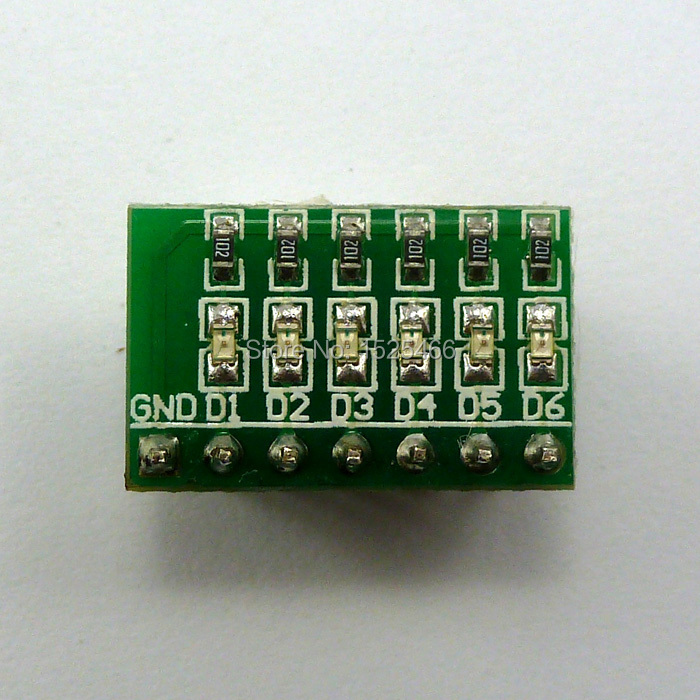
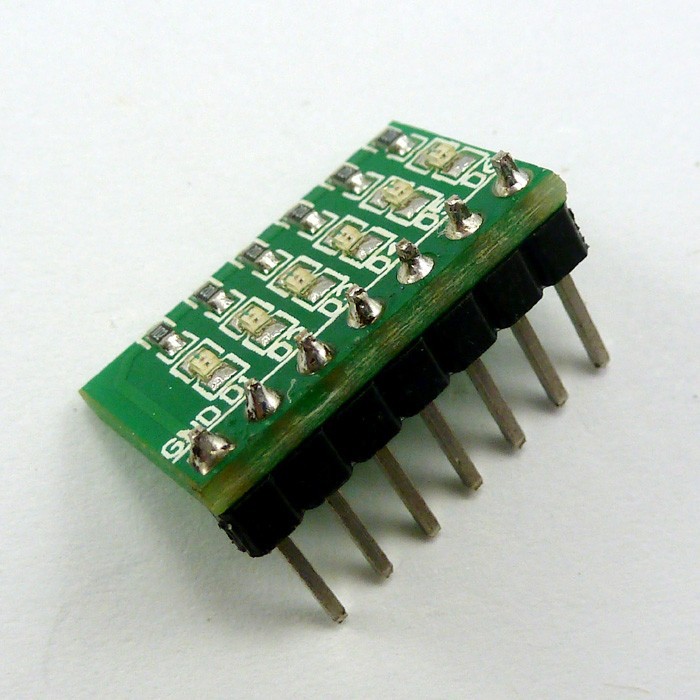
PCB:
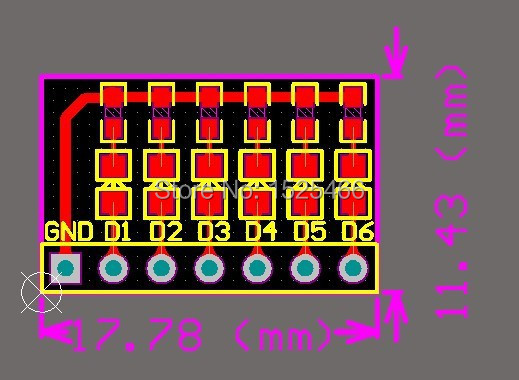
Circuit schematics :

Connection with Arduiuo(Only 6 bit LED's Board ,Does not include ARDUIUO UNO R3):

Arduiuo uno/mega2560 Code 1pcs
//******************************************************//
/*
Arduiuo_6led
This example code is in the public domain.
*/
// give it a name:
int D1 = 13;
int D2 = 12;
int D3 = 11;
int D4 = 10;
int D5 = 9;
int D6 = 8;
// the setup routine runs once when you press reset:
void setup() {
// initialize the digital pin as an output.
pinMode(D1, OUTPUT);
pinMode(D2, OUTPUT);
pinMode(D3, OUTPUT);
pinMode(D4, OUTPUT);
pinMode(D5, OUTPUT);
pinMode(D6, OUTPUT);
}
// the loop routine runs over and over again forever:
void loop() {
digitalWrite(D1, HIGH); // turn the LED on (HIGH is the voltage level)
delay(200); // wait for a 200 Millisecond
digitalWrite(D1, LOW); // turn the LED off by making the voltage LOW
digitalWrite(D2, HIGH); // turn the LED on (HIGH is the voltage level)
delay(200); // wait for a Millisecond
digitalWrite(D2, LOW); // turn the LED off by making the voltage LOW
digitalWrite(D3, HIGH); // turn the LED on (HIGH is the voltage level)
delay(200); // wait for a Millisecond
digitalWrite(D3, LOW); // turn the LED off by making the voltage LOW
digitalWrite(D4, HIGH); // turn the LED on (HIGH is the voltage level)
delay(200); // wait for a Millisecond
digitalWrite(D4, LOW); // turn the LED off by making the voltage LOW
digitalWrite(D5, HIGH); // turn the LED on (HIGH is the voltage level)
delay(200); // wait for a Millisecond
digitalWrite(D5, LOW); // turn the LED off by making the voltage LOW
digitalWrite(D6, HIGH); // turn the LED on (HIGH is the voltage level)
delay(200); // wait for a Millisecond
digitalWrite(D6, LOW); // turn the LED off by making the voltage LOW
}
//******************************************************//


Arduiuo uno/mega2560 Code(Insert two LED board)
//******************************************************//
/*
Arduiuo_6led
This example code is in the public domain.
*/
// LED Board 1
int D1 = 13;
int D2 = 12;
int D3 = 11;
int D4 = 10;
int D5 = 9;
int D6 = 8;
// LED Board 2
int D11 = 1;
int D12 = 2;
int D13 = 3;
int D14 = 4;
int D15 = 5;
int D16 = 6;
int GND = 7;//Common Cathode
// the setup routine runs once when you press reset:
void setup() {
// initialize the digital pin as an output.
pinMode(D1, OUTPUT);
pinMode(D2, OUTPUT);
pinMode(D3, OUTPUT);
pinMode(D4, OUTPUT);
pinMode(D5, OUTPUT);
pinMode(D6, OUTPUT);
pinMode(D11, OUTPUT);
pinMode(D12, OUTPUT);
pinMode(D13, OUTPUT);
pinMode(D14, OUTPUT);
pinMode(D15, OUTPUT);
pinMode(D16, OUTPUT);
pinMode(GND, OUTPUT);
digitalWrite(GND, LOW);
}
// the loop routine runs over and over again forever:
void loop() {
digitalWrite(D1, HIGH); // turn the LED on (HIGH is the voltage level)
delay(200); // wait for a 200 Millisecond
digitalWrite(D1, LOW); // turn the LED off by making the voltage LOW
digitalWrite(D2, HIGH); // turn the LED on (HIGH is the voltage level)
delay(200); // wait for a Millisecond
digitalWrite(D2, LOW); // turn the LED off by making the voltage LOW
digitalWrite(D3, HIGH); // turn the LED on (HIGH is the voltage level)
delay(200); // wait for a Millisecond
digitalWrite(D3, LOW); // turn the LED off by making the voltage LOW
digitalWrite(D4, HIGH); // turn the LED on (HIGH is the voltage level)
delay(200); // wait for a Millisecond
digitalWrite(D4, LOW); // turn the LED off by making the voltage LOW
digitalWrite(D5, HIGH); // turn the LED on (HIGH is the voltage level)
delay(200); // wait for a Millisecond
digitalWrite(D5, LOW); // turn the LED off by making the voltage LOW
digitalWrite(D6, HIGH); // turn the LED on (HIGH is the voltage level)
delay(200); // wait for a Millisecond
digitalWrite(D6, LOW); // turn the LED off by making the voltage LOW
digitalWrite(D16, HIGH); // turn the LED on (HIGH is the voltage level)
delay(200); // wait for a Millisecond
digitalWrite(D16, LOW); // turn the LED off by making the voltage LOW
digitalWrite(D15, HIGH); // turn the LED on (HIGH is the voltage level)
delay(200); // wait for a Millisecond
digitalWrite(D15, LOW); // turn the LED off by making the voltage LOW
digitalWrite(D14, HIGH); // turn the LED on (HIGH is the voltage level)
delay(200); // wait for a Millisecond
digitalWrite(D14, LOW); // turn the LED off by making the voltage LOW
digitalWrite(D13, HIGH); // turn the LED on (HIGH is the voltage level)
delay(200); // wait for a Millisecond
digitalWrite(D13, LOW); // turn the LED off by making the voltage LOW
digitalWrite(D12, HIGH); // turn the LED on (HIGH is the voltage level)
delay(200); // wait for a Millisecond
digitalWrite(D12, LOW); // turn the LED off by making the voltage LOW
digitalWrite(D11, HIGH); // turn the LED on (HIGH is the voltage level)
delay(200); // wait for a 200 Millisecond
digitalWrite(D11, LOW); // turn the LED off by making the voltage LOW
}
//******************************************************//
Share

